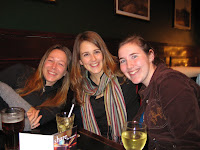 Congratulations to Grace Murphy who was awarded an NSERC scholarship for her PhD research on the effects of anthropogenic disturbances on biodiversity and ecosystem functioning and to PhD student Mather Carscallen who won the InnovaCorp Clean Tech Open
Congratulations to Grace Murphy who was awarded an NSERC scholarship for her PhD research on the effects of anthropogenic disturbances on biodiversity and ecosystem functioning and to PhD student Mather Carscallen who won the InnovaCorp Clean Tech Open
 .
.















































